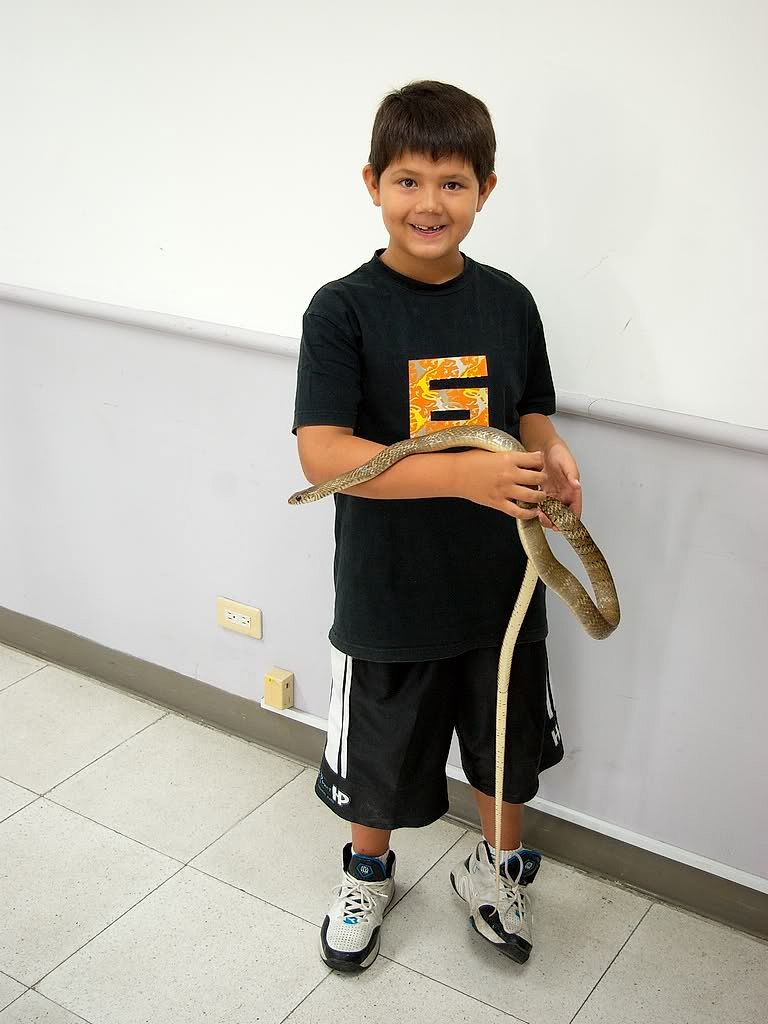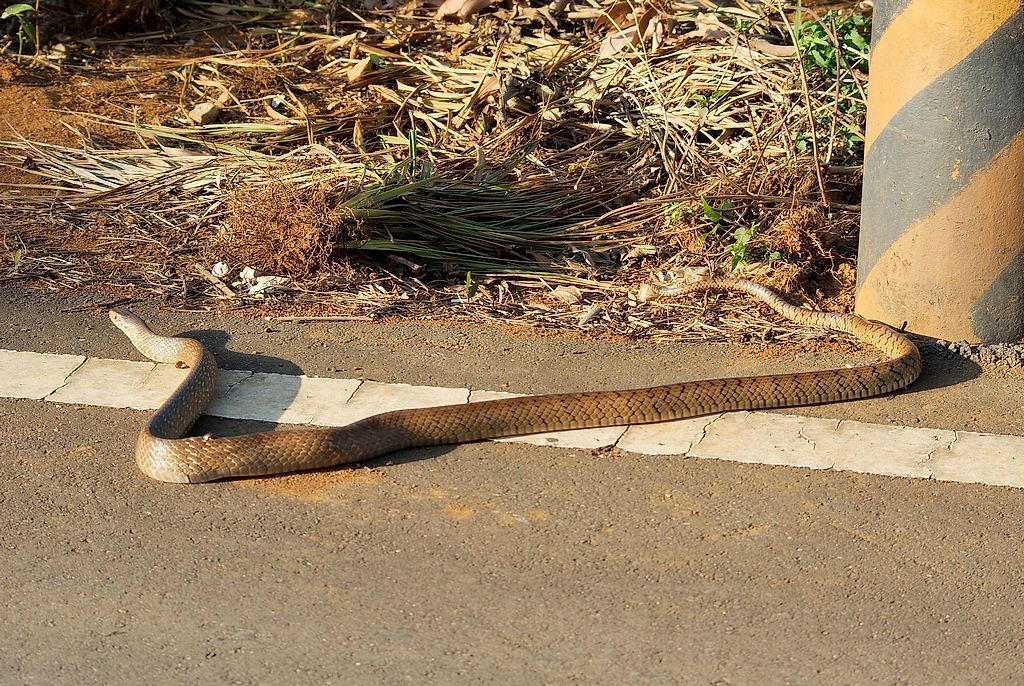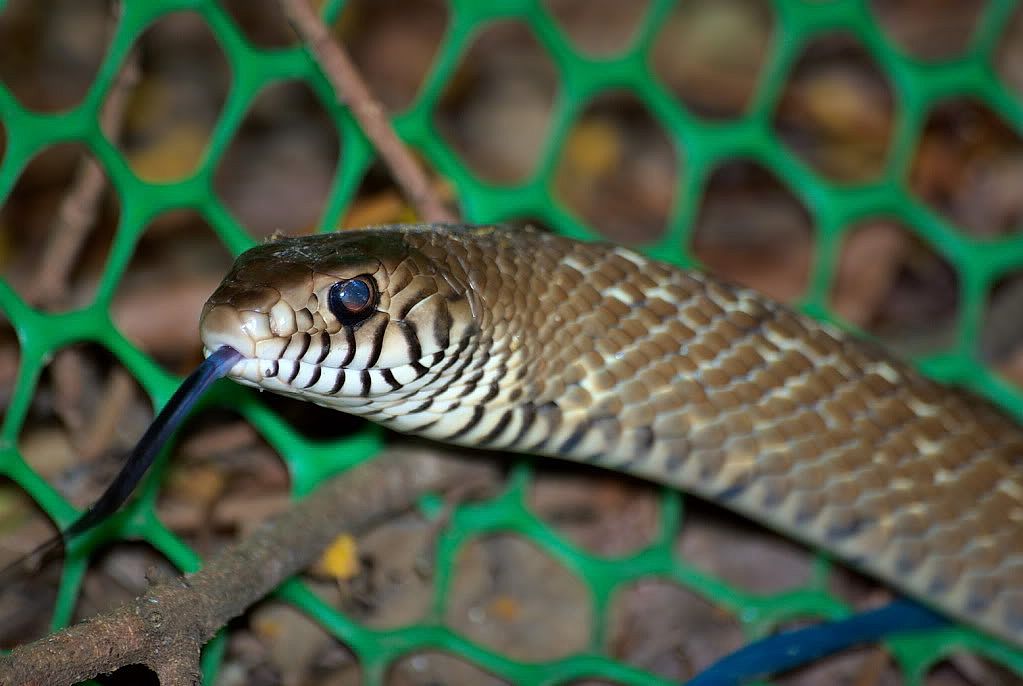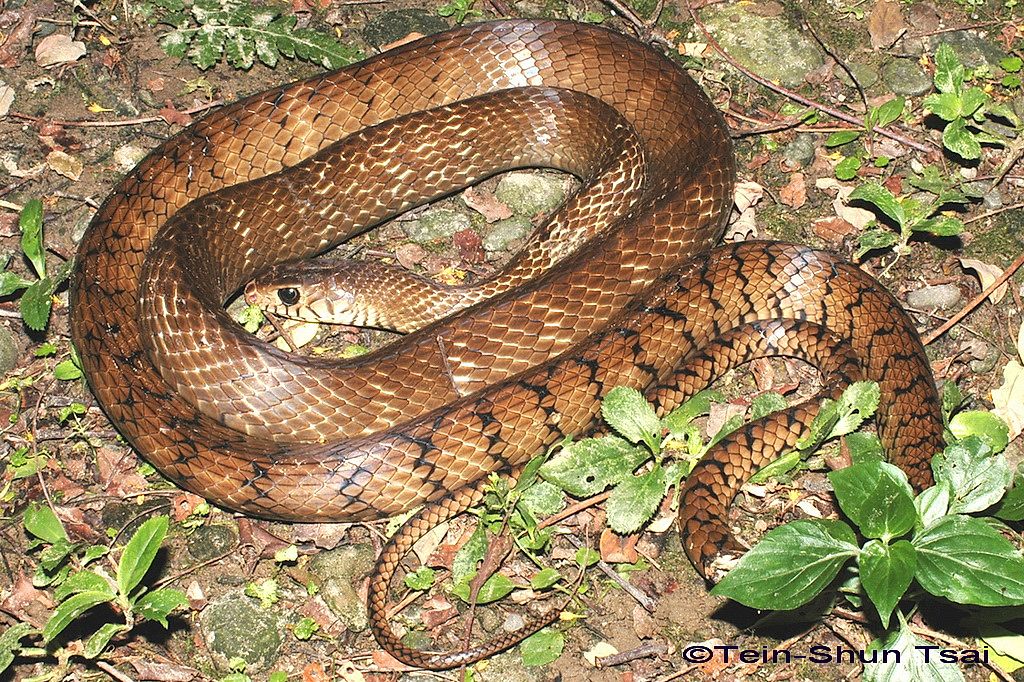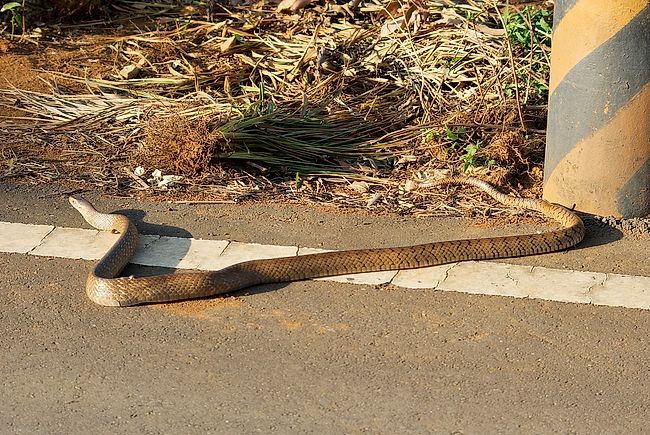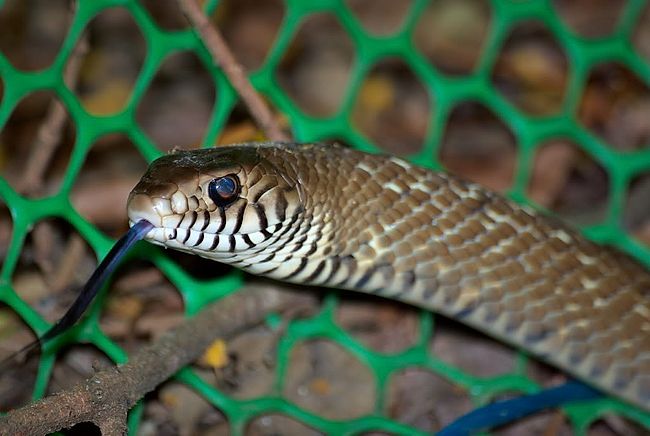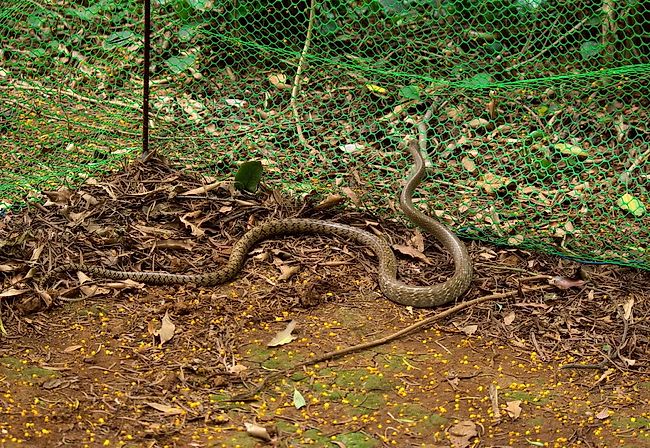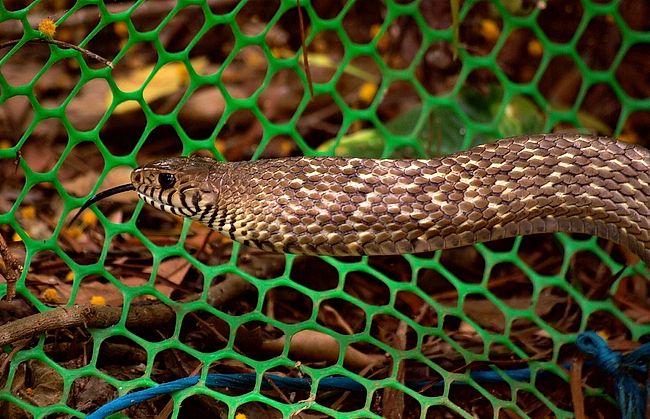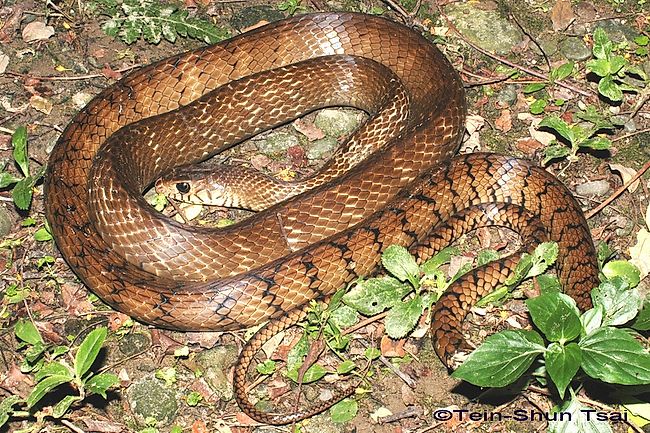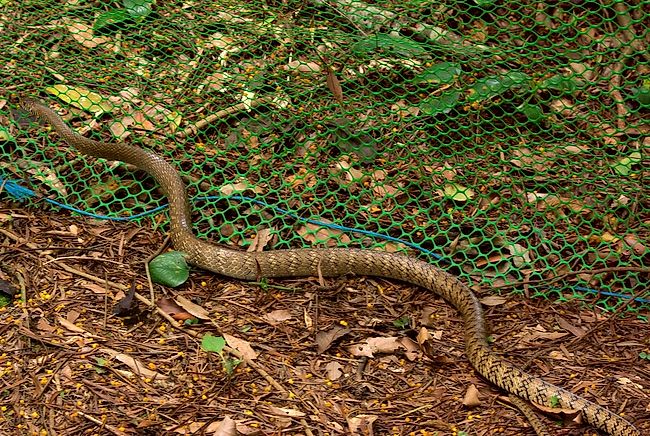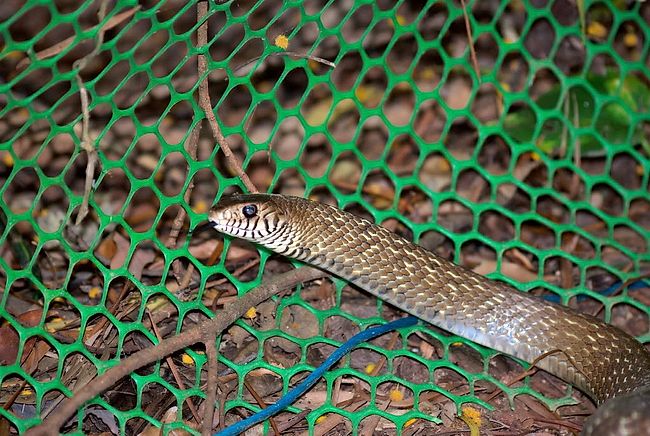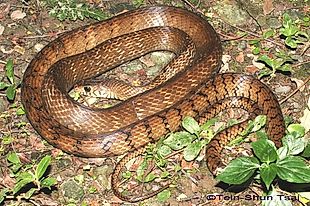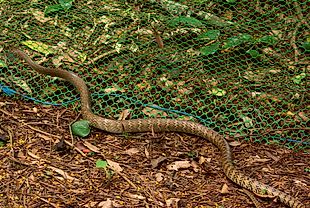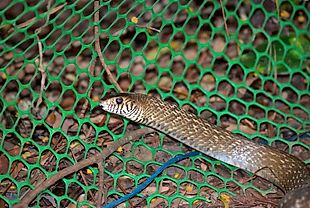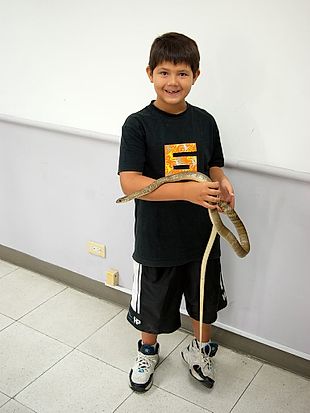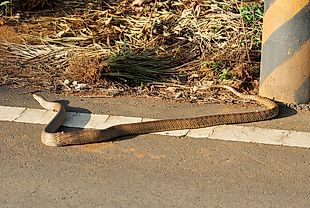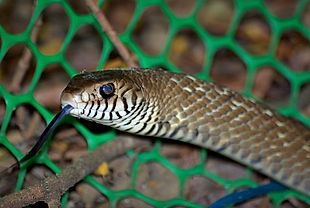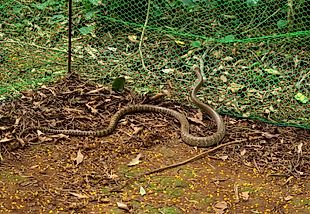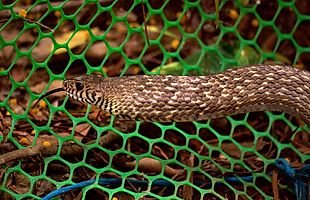Ptyas mucosa
Dhaman (Oriental) Ratsnake
南蛇 (nan2she2)
Status: Not Protected
Non-venomous
More Photos
Family
Colubridae, subfamily Colubrinae
Max. length
360 cm
Occurrence in Taiwan
Widely distributed in Taiwan (mostly in the South), Kinmen, and Matsu, up to 1000 m altitude.
Global Distribution
Afghanistan, Iran, Turkmenistan, former U.S.S.R., Nepal, Pakistan, Bangladesh, India (Maharashtra, Karnataka, Andamans), Sri Lanka, South China (Zhejiang, Hubei, Jiangxi, Anhui, Fujian, Guangdong, Guangxi, Hainan, Yunnan, Tibet, Guizhou, Sichuan), Taiwan, Myanmar, Cambodia, Laos, West Malaysia, Thailand, Vietnam, Indonesia (Sumatra, Java).
Description
Large snake; total length up to 360 cm. There are 14-19 (21) rows of smooth or feebly keeled scales. Head is oval to slightly triangular; body is slender to moderately heavy and tail is long. Eye is large; iris is dark brown to brown black dappled with dirty yellow to tan and pupil is large, round jet black, surrounded by ill-defined ring of dirty yellow. Nostril is prominent. The supraocular forms laterally protruding shelf over eye. There are 2-5 loreals at each side. Tongue is large, black to blue-black, with often dark gray fork tips. Upper head is uniform light to dark brown; the labials are distinct due to lines of black pigment on posterior margin of each scale. Upper body and tail are light to dark brown while some scales have dark brown or black margins and are arranged in various designs; the majority tend to form irregular ill-defined narrow bands around posterior body and tail. Juveniles are olive yellow dorsally, and bear transverse rows of white spots across body anteriorly. Ventral head is cream to light gray; some scales possess indistinct black posterior margins. Ventral body is cream to light gray, with pigmented areas on posterior margins that are progressively larger and darker in posterior part of body. Anal scale is divided and subcaudals are paired, distinctly marked dark brown to black.
Biology & Ecology
This diurnal and semiarboreal snake inhabits forest floors and farmland as well as wetlands,
and may appear near human residences. It preys on frogs, toads, lizards, snakes, birds, mice,
and small mammals. Unlike many other nonvenomous snakes, P. mucosa does not constrict its prey,
but rather uses its body to press it onto the ground or other hard surfaces to suffocate it.
It mates in late spring and early summer; females produce 6-15 eggs of 4-5 x 2.5-4 cm per
clutch in summer and early fall. Hatchlings measure 36-41 cm in total length.
This snake moves rapidly and is very excitable. When threatened, it expands its throat and neck
longitudinally and produces a continuous hissing and/or growling sound. When captured, it whips
about violently and makes every attempt to bite and wrap itself tightly around the captor. In
captivity it strikes on the slightest provocation and may continue to manifest this attitude,
injuring or bruising its nose against the confinement walls when objects pass by. Some herpetologists
(Harry Greene, for one) believe both the neck inflation and the growling might be features mimicking
the King Cobra (Ophiophagus hannah).
Etymology
Ptyas is Ancient Greek for a kind of serpent said to spit venom into the eyes of men;
mucosus/mucosa is Latin for "slimy" (Origins unknown)
The Chinese name 南蛇 (nan2she2) means "Southern Snake"
Further Info
